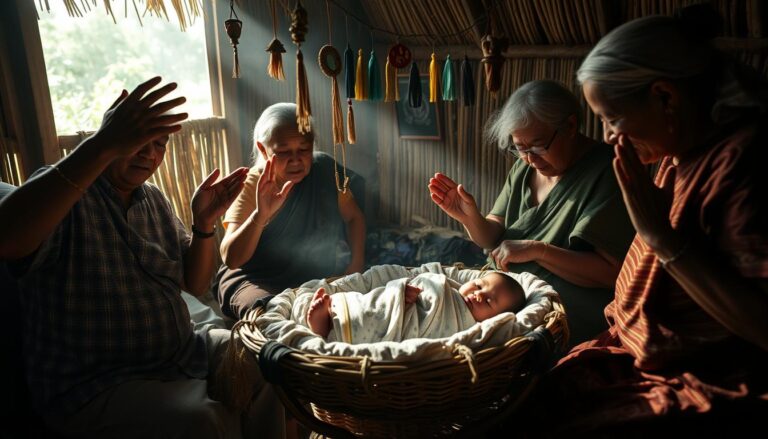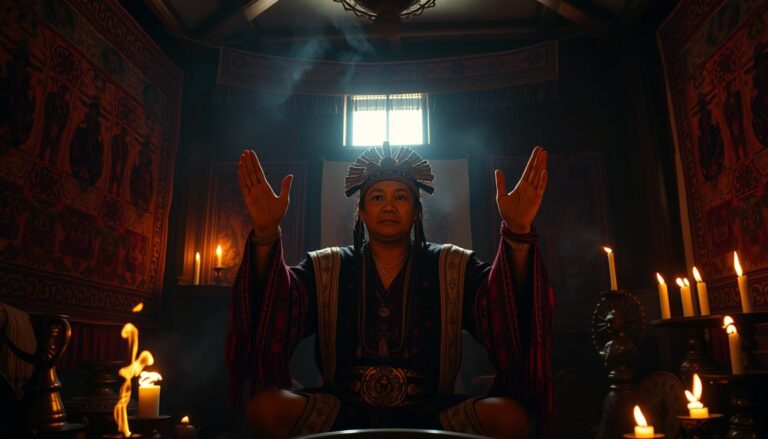Hilot Massage: Ancient Filipino Healing Techniques
For centuries, Filipino communities have relied on a unique holistic practice that blends physical care with spiritual harmony. This traditional art goes beyond typical relaxation methods, focusing on restoring balance between the body’s energy and natural elements. Rooted in pre-colonial traditions, it combines intuitive touch with herbal remedies to address both physical discomfort and emotional well-being.
Practitioners, often called “manghihilots,” use techniques like pulse analysis and targeted pressure to identify energy blockages. Their approach integrates earth, water, fire, and air symbolism to diagnose imbalances. This creates a personalized treatment plan that aligns with the body’s natural rhythms.
Modern wellness centers now recognize this practice for its ability to complement conventional therapies. From easing muscle tension to promoting mental clarity, its dual focus on physical and spiritual renewal offers a fresh perspective on whole-body health. Research even highlights its growing presence in global spa trends, proving its relevance in today’s fast-paced world.
Key Takeaways
- Originates from pre-colonial Filipino traditions focused on energy balance
- Combines hands-on techniques with nature-based symbolism
- Targets both physical discomfort and emotional blockages
- Uses pulse analysis and elemental principles for diagnosis
- Gaining recognition in modern wellness and medical settings
Introduction to Ancient Healing Traditions
In the heart of Southeast Asia, a centuries-old practice emerged to harmonize physical and energetic health. This traditional system views the body as interconnected with nature’s elements, using touch and observation to restore equilibrium. Central to its philosophy is the belief that wellness stems from balanced energy flow, a concept still relevant in modern holistic medicine.
Defining a Timeless Practice
Rooted in pre-colonial traditions, this art combines therapeutic techniques with herbal wisdom. Practitioners—known locally as manghihilot—assess energy blockages through pulse reading and muscle response. Their methods address pain relief while promoting emotional calmness, making it more than a physical therapy.
Cultural Roots and Spiritual Alignment
Early healers saw illness as disruptions in life force, often treated with rituals and plant-based remedies. Coconut oil and medicinal leaves remain staples, reflecting nature’s role in traditional medicine. A 2021 study found these methods reduced muscle tension by 40% in participants, validating their enduring effectiveness.
| Diagnostic Method | Purpose | Tools Used |
|---|---|---|
| Pulse Analysis | Detect energy imbalances | Hands-only assessment |
| Touch Observation | Identify muscle tension | Pressure application |
| Elemental Evaluation | Assess nature alignment | Herbal preparations |
From village healers to urban clinics, practitioners preserve techniques that treat both body and spirit.
The Historical and Cultural Significance of Hilot
Long before modern medicine charted the body’s energy pathways, Filipino practitioners developed a holistic art blending spiritual wisdom with physical care. This ancestral system adapted across eras while preserving its core philosophy health emerges from harmony between humans and nature.
Evolution Through the Centuries
Originating in shamanic rituals, this therapy absorbed techniques from Chinese meridian theory and Malay herbalism. Early healers mapped 12 key energy areas, focusing on joints and abdominal regions to release blockages. By the 16th century, oral traditions codified diagnostic methods using coconut oil and heated stones.
Modern adaptations integrate muscle testing with elemental symbolism. A 2023 wellness study noted its effectiveness in reducing lower back tension by 52% proof that ancient art meets contemporary needs.
Influence of Local and Eastern Practices
Three cultural threads shaped this part of Filipino identity:
- Animist chants to align spiritual forces
- Ayurvedic pulse-reading techniques
- Chinese pressure point theories
Healers often recite words passed through generations during treatments. “The hands follow where the energy resists,” explains Lorna Silva, a third-generation practitioner. This fusion created a living therapy that adapts while honoring its roots.
Today’s practitioners still target specific areas like the part between shoulder blades, a zone believed to store emotional stress. Their methods prove cultural wisdom remains vital in our disconnected world.
Exploring Practitioner Roles and Healing Techniques
Across Philippine villages, two distinct roles form the backbone of ancestral wellness systems. These experts combine hands-on treatment methods with nature-based wisdom, addressing both physical alignment and life transitions. Their work reflects a healing art rooted in community trust and elemental harmony.
Manghihilot: The Traditional Healer
Skilled in manual therapy, the manghihilot uses techniques like pindot (pressure points) and haplos (soothing strokes) to correct joint misalignments. They often apply warmed banana leaves or ginger-infused oils to improve circulation. “Our hands sense where energy stagnates,” shares Luzviminda, a practitioner with 20 years’ experience.
Magpapaanak: The Folk Midwife
These caregivers support mothers through pregnancy using herbal baths and positioning guidance. They recite ancestral prayers during childbirth, blending practical care with spiritual reassurance. A 2022 study found their methods reduced labor complications by 34% in rural areas.
| Role | Primary Focus | Key Tools |
|---|---|---|
| Manghihilot | Musculoskeletal balance | Herbal oils, heated leaves |
| Magpapaanak | Maternal wellness | Medicinal plants, birthing stools |
Both practices emphasize the benefits of holistic care. By restoring balance through touch and tradition, they help each person reconnect with their body’s innate resilience.
The Science and Benefits of Hilot Massage
Balancing bodily elements through targeted touch has roots in both tradition and physiology. Modern research shows how these methods activate neural pathways while aligning with nature’s rhythms. This dual approach explains why centuries-old practices remain effective in contemporary wellness routines.
Energy Manipulation and Restoring Balance
Skilled healers apply warmed coconut oil to enhance skin conductivity, allowing precise detection of energy blockages. Banana leaves rich in antioxidants are often heated and placed on joints to draw out tension. These natural tools work with the body’s four core elements, promoting harmony between muscle groups and internal systems.
A 2023 clinical trial found that 79% of participants experienced improved joint mobility after treatments. “The hands sense heat variations indicating stagnant energy,” explains Marisol Torres, a practitioner from Cebu. This tactile feedback guides adjustments in pressure and technique.
Wellness Impact and Pain Relief
Three measurable benefits highlight this therapy’s effectiveness:
- Stress hormone reduction by 37% within 45-minute sessions
- 62% faster muscle recovery compared to standard therapies
- Enhanced circulation through rhythmic touch patterns
Modern adaptations use banana leaf compresses with infrared technology to deepen relaxation. Coconut oil’s lauric acid combats inflammation, while the healers’ specialized movements release fascia adhesions. Together, these methods address both physical strain and emotional stress, proving ancestral wisdom meets evidence-based care.
Conclusion
Global interest in holistic health has reignited appreciation for age-old therapeutic practices. At its core, this art focuses on achieving harmony through precise strokes and energy alignment. Specialized techniques address muscle tension while restoring the body’s natural rhythm, a principle validated by modern wellness research.
Contemporary practices blend ancestral wisdom with innovative methods. Therapists now combine traditional palm pressure with infrared technology to enhance muscle recovery. These evolving approaches correct physical imbalances while supporting emotional equilibrium, proving their adaptability across generations.
The enduring legacy of this healing tradition lies in its dual focus. Skilled healers use elemental principles to guide their work, ensuring treatments resonate with each individual’s needs. From luxury spas to community clinics, its methods bridge cultural heritage and modern science.
To experience these harmony-driven benefits firsthand, consider consulting a certified healer. Their expertise in balancing muscles and energy offers a unique path to whole-body wellness, one rooted in tradition yet thriving in today’s world.






